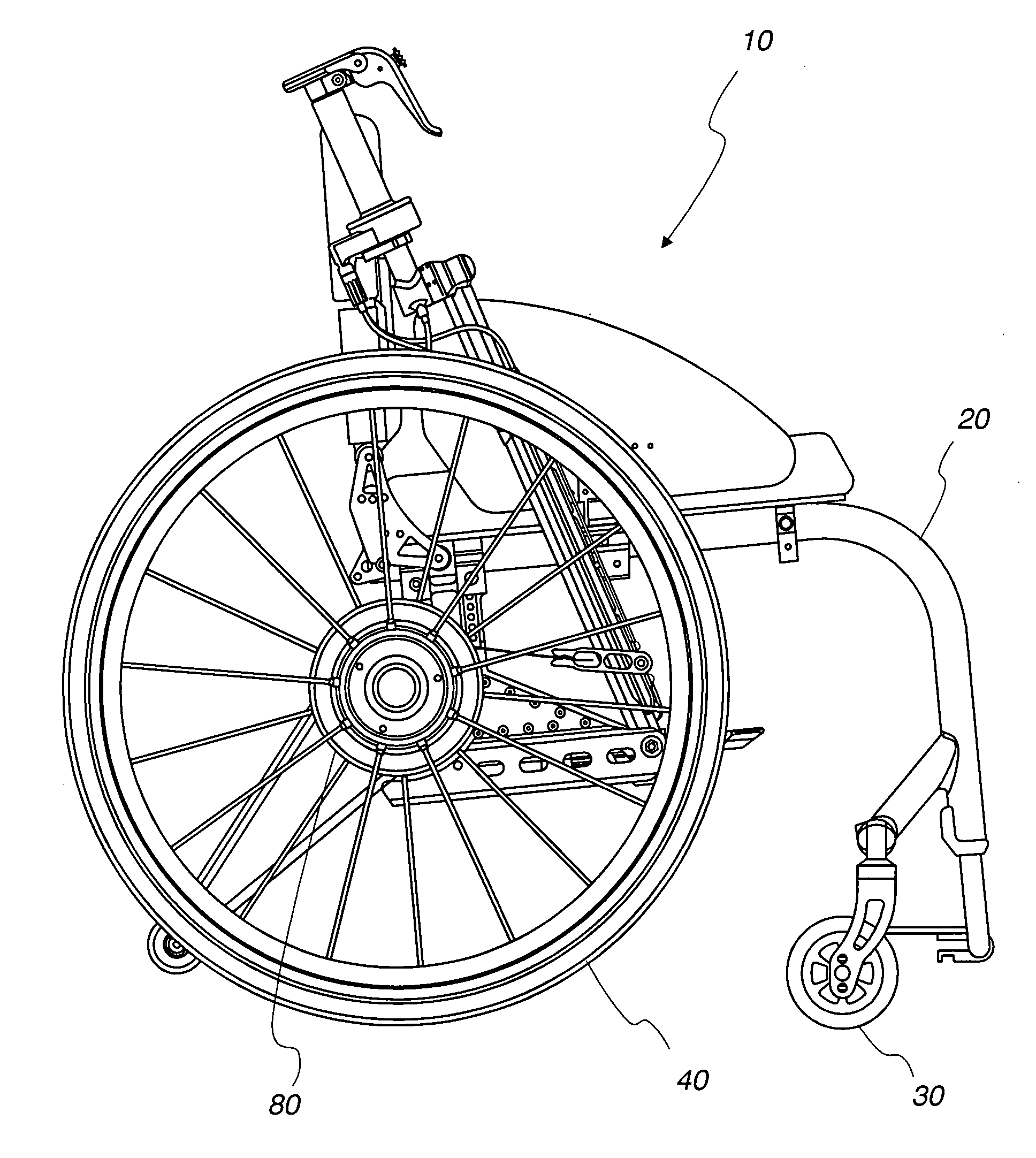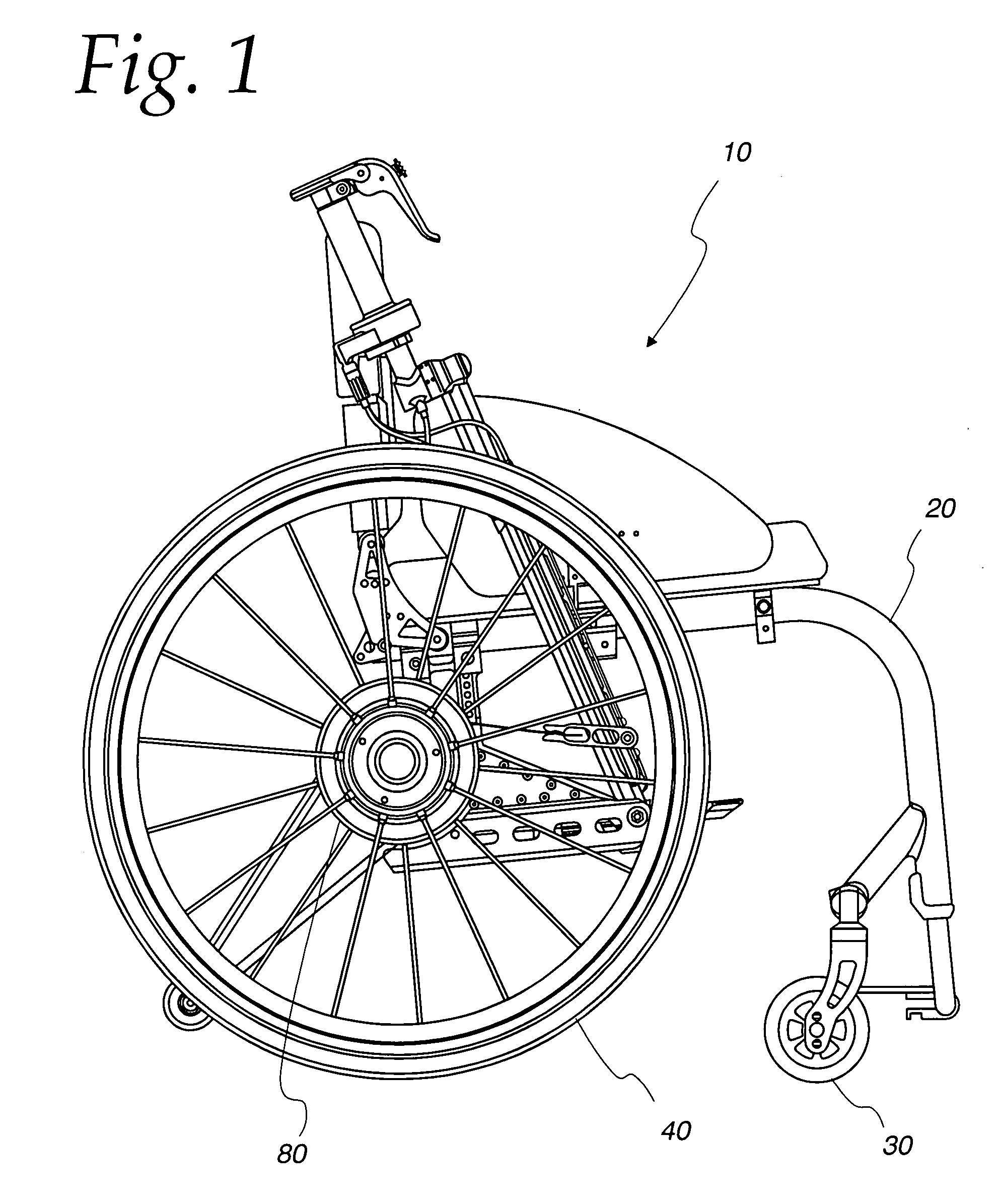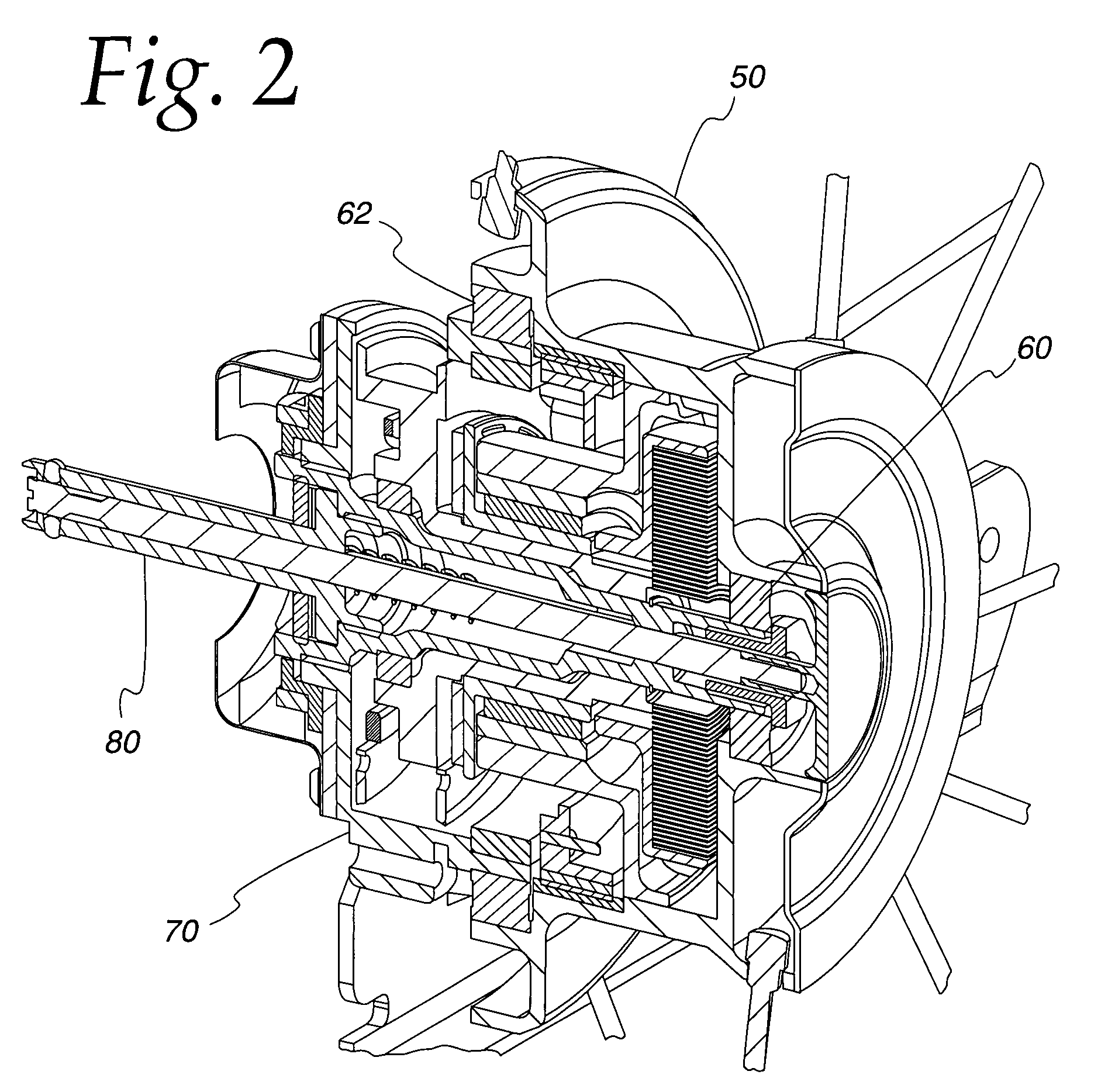Human powered vehicle drive system
a technology of drive system and human body, which is applied in the direction of rider propulsion, vehicle components, ambulance service, etc., can solve the problems of low speed comfortably achievable, poor ergonomics, and power stroke basic problems,
- Summary
- Abstract
- Description
- Claims
- Application Information
AI Technical Summary
Benefits of technology
Problems solved by technology
Method used
Image
Examples
Embodiment Construction
[0049]While the present invention may be used in any vehicle or craft, particularly wherein a reciprocating input motion is converted to a rotating output motion, the example of a wheelchair is used to explain the invention in the following description and illustrated embodiments. In the interest of a clear description, the structure of a wheelchair is first outlined, and then the mechanisms of the lever drive system and associated features are described in detail.
Structural Elements of Wheelchair
[0050]A lever drive wheelchair is generally designated as 10 in FIG. 1. Wheelchair 10 includes a conventional chair frame 20 with all the usual features known in the art. The front of chair 10 is supported on self steering casters 30. There are right and left casters for balance.
[0051]The rest of the weight of the chair is supported by the driven wheels 40. These can be provided with conventional hand rims (not shown) for conventional hand power and maneuvering. Again there is a right and a...
PUM
 Login to View More
Login to View More Abstract
Description
Claims
Application Information
 Login to View More
Login to View More - R&D
- Intellectual Property
- Life Sciences
- Materials
- Tech Scout
- Unparalleled Data Quality
- Higher Quality Content
- 60% Fewer Hallucinations
Browse by: Latest US Patents, China's latest patents, Technical Efficacy Thesaurus, Application Domain, Technology Topic, Popular Technical Reports.
© 2025 PatSnap. All rights reserved.Legal|Privacy policy|Modern Slavery Act Transparency Statement|Sitemap|About US| Contact US: help@patsnap.com



